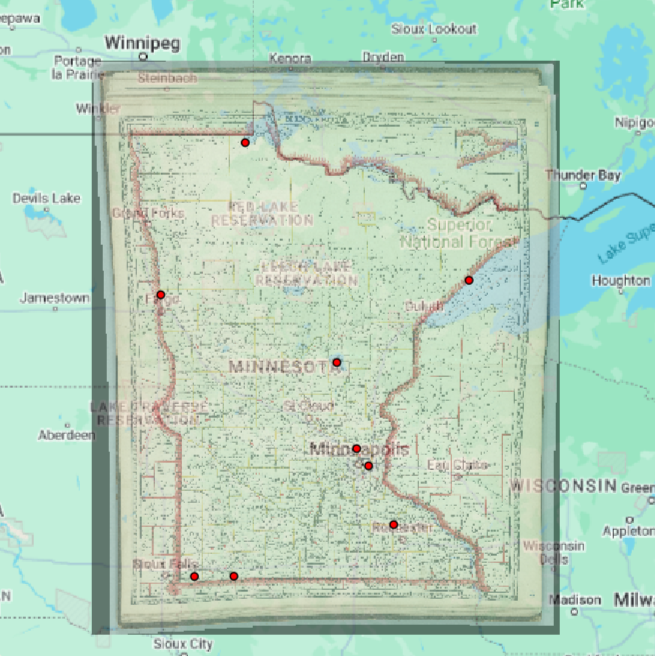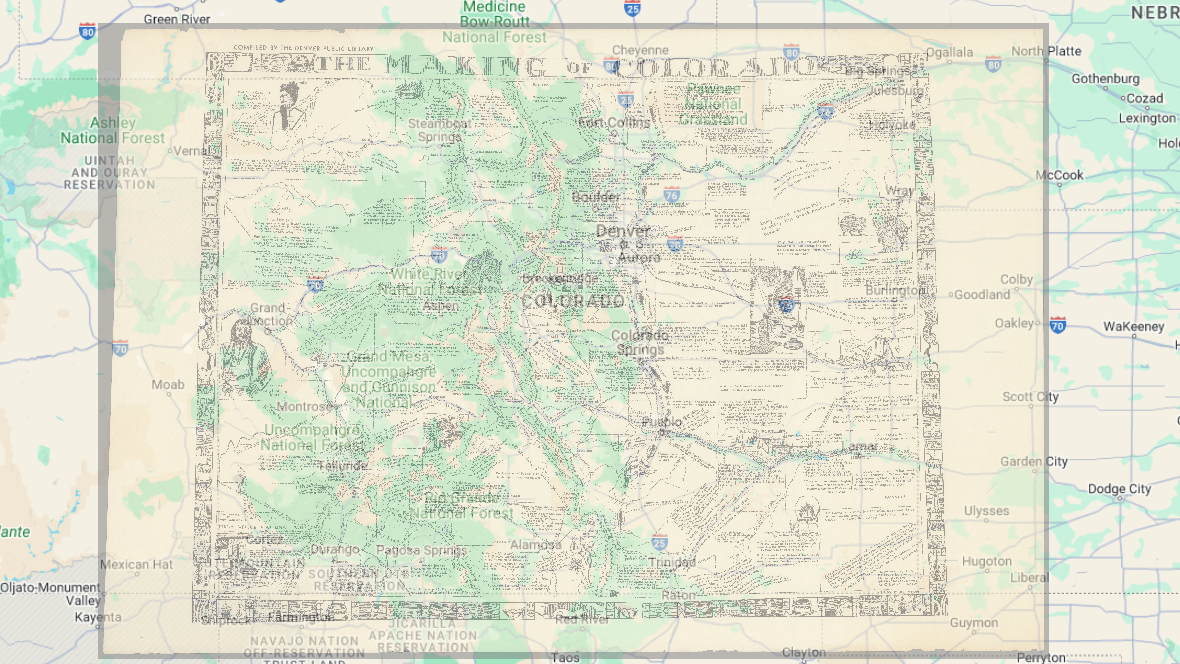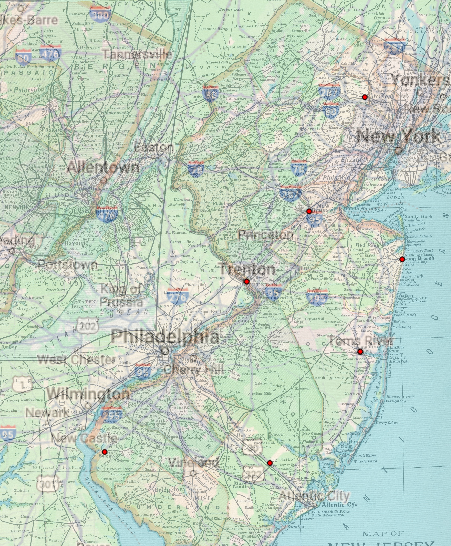
How might you use this georeferenced image to uncover new information about the history of the region you just mapped?
While working on this image I found myself noticing two new things to think about. First, the movement of water, in the maps the rivers might look slightly different, but also how much the shapes of the lakes had changed. In some places like south central where there is a lot of lake small lakes this was especially evident. Another new piece of information I noticed was the changing of county lines, especially in the far north area of the state. Some lines moved, while other whole new counties had been formed in the 100+ years between the map’s creation. Using two exact points in time helps show a distinct comparison, compared to a map that shows gradual over time. I think that using just two points in time on a map makes the map easier to digest as well.
What are some weaknesses to this approach? Are there inaccuracies? Do some places map better than others? Why?
One of the first things that comes to mind is how much we have improved technologically since the creation of many older maps. Now, we have access to satellite images to create or cross-reference maps with. However, prior to only a few decades ago, you could not. As a result, a geographer might map something 5 miles off from where it is, if there was an error of some sort in their measuring. While this wasn’t an issue with my map, I can imagine that the older the map, the easier it could have been to make mistakes like this. The map that I chose covers a relatively large area so I felt that it might be easier to place a reference point in a place that is a few hundred years off from where the reference point that I placed on the Google map. Compared to a smaller map where it would be easier to find the exact point, especially on the older map.




